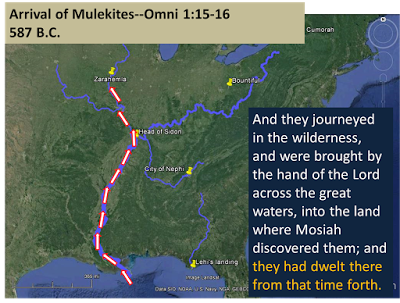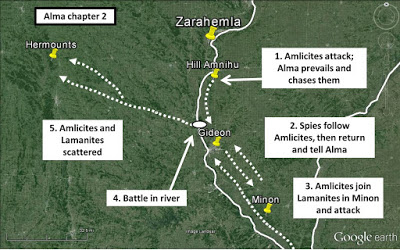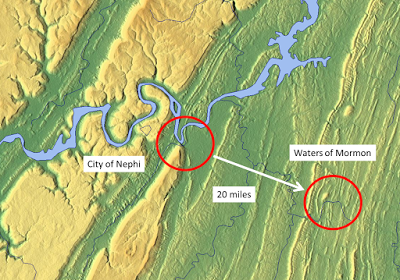Lesson 22: Have Ye Received His Image in Your Countenances?
 When we look at the river bed, we see that these rapids near Keokuk, Iowa, are the first place where the shallows make passage of a large ship impossible. It makes sense that the Mulekites would have disembarked here and “dwelt there from that time forth.” At this point of the Mississippi River, you can cross on foot much of the year. It would make an excellent trading area.
When we look at the river bed, we see that these rapids near Keokuk, Iowa, are the first place where the shallows make passage of a large ship impossible. It makes sense that the Mulekites would have disembarked here and “dwelt there from that time forth.” At this point of the Mississippi River, you can cross on foot much of the year. It would make an excellent trading area. 
When Joseph Smith purchased the land for Nauvoo, he actually purchased far more land across the river in Iowa, as this map from the Joseph Smith papers shows.
 If this area–designated in the 1800s as the “half-breed trace”–was the location of the ancient city of Zarahemla, the location could explain why the people were wealthy and why they had problems with pride, etc. (Of course, every human society has problems of pride, envy, etc. However, Alma focuses particularly on this when he’s in the city of Zarahemla.)
If this area–designated in the 1800s as the “half-breed trace”–was the location of the ancient city of Zarahemla, the location could explain why the people were wealthy and why they had problems with pride, etc. (Of course, every human society has problems of pride, envy, etc. However, Alma focuses particularly on this when he’s in the city of Zarahemla.)Source: 2016 Gospel Doctrine Resource





